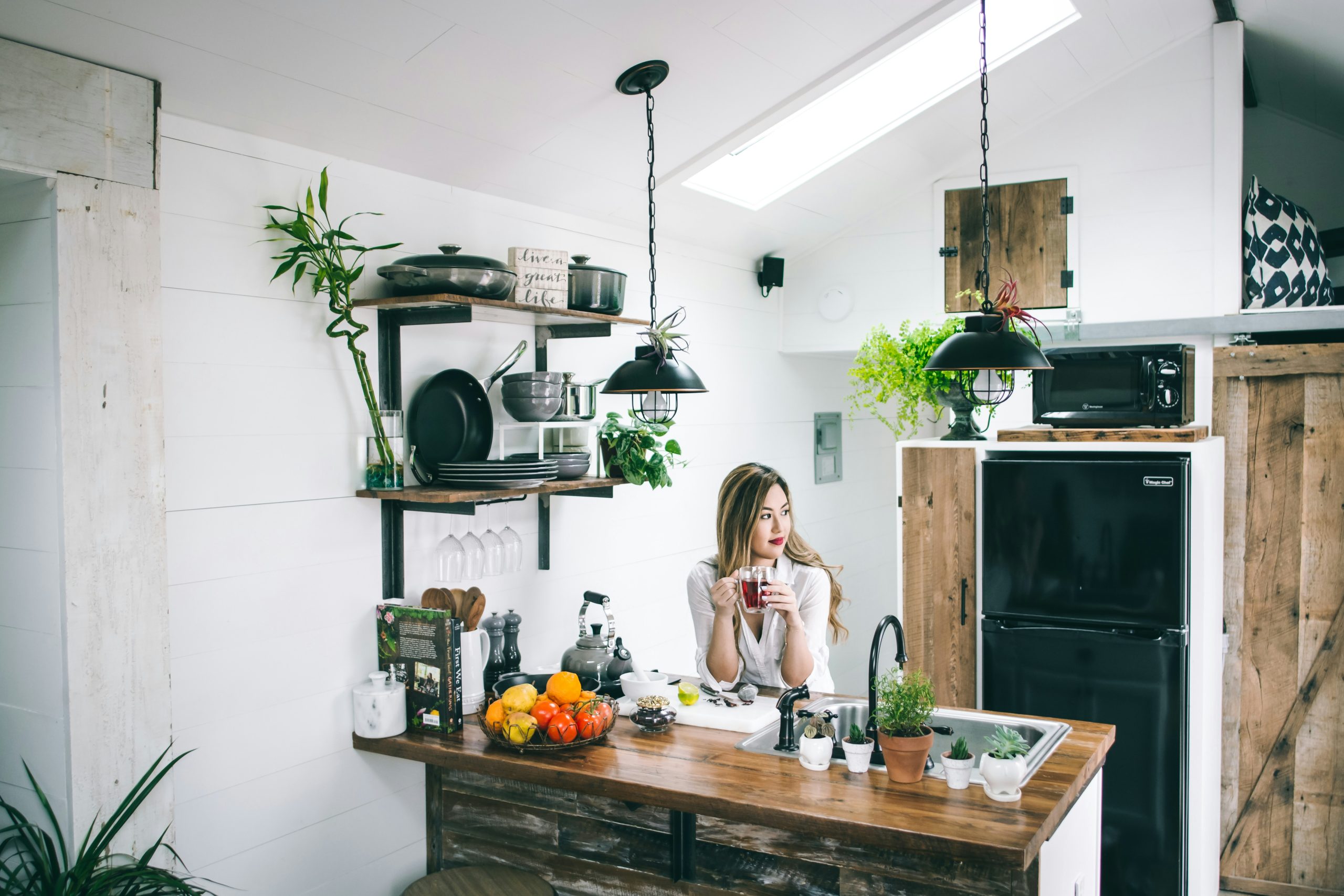Ad Blocker Detected
Our website is made possible by displaying online advertisements to our visitors. Please consider supporting us by disabling your ad blocker.
Congratulations on your new electric pressure cooker! If you’re a beginner and feeling a bit unsure about how to get started, this article is here to help. We’ll provide you with some essential tips and tricks that will make your cooking experience with an electric pressure cooker a breeze. From understanding the different settings to mastering the art of releasing pressure safely, you’ll be cooking delicious meals in no time. So, let’s get started and unlock the full potential of your electric pressure cooker!

Choosing the Right Electric Pressure Cooker
Consider the size and capacity
When choosing an electric pressure cooker, one of the first things you should consider is the size and capacity. Think about how many people you will be cooking for on a regular basis. If you have a large family or like to cook in bulk, you may want to opt for a larger size cooker. On the other hand, if you live alone or only cook for one or two people, a smaller size might be more suitable. It’s important to choose a size that meets your needs to ensure efficient and convenient cooking.
Look for safety features
Safety should always be a top priority when it comes to kitchen appliances, and electric pressure cookers are no exception. Look for models that come with safety features such as pressure release valves and locking lids. These features help to prevent accidents and ensure that the cooking process is safe. Additionally, some pressure cookers have automatic shut-off functions that activate when the pressure reaches a certain level. These safety features provide peace of mind and allow you to cook with confidence.
Check if it has a non-stick inner pot
Having a non-stick inner pot in your electric pressure cooker can make a world of difference when it comes to cooking and cleaning. A non-stick surface prevents food from sticking to the bottom and sides of the pot, making it easier to clean up afterward. It also ensures that your meals are cooked evenly and reduces the risk of burning or scorching. Look for a pressure cooker with a durable and high-quality non-stick coating for a hassle-free cooking experience.
Consider the available preset cooking programs
Many electric pressure cookers come with preset cooking programs that are specifically designed for different types of dishes. These programs can make cooking a breeze, especially for beginners. They take the guesswork out of the equation and ensure that your meals turn out perfectly every time. Some common preset cooking programs include rice, soup/stew, meat, and steam. Consider your cooking preferences and the types of dishes you plan to prepare frequently when choosing a pressure cooker with preset cooking programs.
Understanding the Basic Parts of an Electric Pressure Cooker
Lid and sealing ring
The lid of an electric pressure cooker plays a crucial role in building and maintaining pressure during the cooking process. It should fit tightly to prevent any steam from escaping. Most lids have a sealing ring that forms a tight seal between the lid and the pot. The sealing ring prevents steam from leaking out and helps to maintain the desired pressure inside the cooker. It’s important to clean the sealing ring regularly to ensure optimal performance and prevent any cross-contamination of flavors.
Pressure release valve
The pressure release valve is a safety feature that allows you to control the release of pressure from the cooker. It can be in the form of a knob or a button. When the cooking process is complete, you can either release the pressure manually by turning the valve or let it release naturally. It’s essential to follow the recommended pressure release methods to ensure safe and efficient operation of the electric pressure cooker.
Pressure indicator
The pressure indicator on an electric pressure cooker shows whether the cooker is building pressure or releasing pressure. It provides visual feedback and helps you monitor the progress of your cooking. When the cooker reaches the desired pressure, the indicator will pop up, indicating that the food is cooking under pressure. It’s important to keep an eye on the pressure indicator to ensure that the cooking process is going smoothly.
Inner pot
The inner pot of an electric pressure cooker is where you place your ingredients for cooking. It is usually made of stainless steel or a non-stick material. The inner pot is removable, which makes it easy to clean and serve your meals directly from the pot. Ensure that the inner pot is properly placed and locked before starting the cooking process to avoid any accidents or malfunctions.
Control panel
The control panel is the interface of the electric pressure cooker, where you can adjust the cooking time, select preset programs, and control the pressure release. It usually consists of buttons and a digital display. Familiarize yourself with the control panel of your specific pressure cooker model and refer to the instruction manual to understand how to use it effectively.
Reading and Following the Instruction Manual
Read the manual thoroughly
When you first purchase an electric pressure cooker, it’s important to take the time to read the instruction manual thoroughly. The manual contains important information about the specific features and functions of your pressure cooker. It will provide guidance on how to operate the cooker safely and effectively. By reading the manual, you will gain a better understanding of the cooking process and be able to make the most out of your electric pressure cooker.
Understand the safety precautions
Electric pressure cookers can be powerful appliances that operate under high pressure. It’s essential to understand and follow the safety precautions outlined in the instruction manual. This includes ensuring proper sealing of the cooker, avoiding overfilling, and using caution when releasing pressure. By following these safety precautions, you can prevent accidents and ensure a safe cooking experience.
Follow the recommended cooking guidelines
The instruction manual will also provide recommended cooking guidelines for different types of dishes. These guidelines will specify the cooking time, pressure level, and any additional instructions or settings required for each dish. It’s important to follow these guidelines closely to achieve optimal results. Experimenting with different cooking times and pressure levels can be done once you have become more comfortable and experienced with using the electric pressure cooker.
Learning the Different Pressure Release Methods
Natural pressure release
Natural pressure release is the process of allowing the pressure inside the cooker to decrease naturally without any intervention. After the cooking time is complete, simply turn off the heat and let the pressure inside the cooker drop on its own. Natural pressure release is ideal for dishes that are delicate or require a longer resting time. It allows the flavors to fully develop and ensures a tender and moist texture.
Quick pressure release
Quick pressure release is the process of manually releasing the pressure from the cooker using the pressure release valve. This method is suitable for dishes that need to be cooked quickly or when you want to stop the cooking process immediately. To quick release the pressure, turn the valve to the release position after the cooking time is complete. However, be cautious as hot steam will be released, so keep your hands and face away from the valve to avoid burns.
Cold water release
Cold water release is a method used to rapidly reduce the pressure inside the cooker by placing the cooker’s base in a sink filled with cold water. This method should only be used in certain situations, such as when you want to quickly cool down the contents of the pot or when dealing with a food item that tends to overcook easily. To do a cold water release, carefully move the cooker to the sink and position it so that only the base is immersed in cold water.

Mastering the Water-to-Food Ratio
Follow the recommended ratios for different ingredients
The water-to-food ratio is an important factor to consider when using an electric pressure cooker. Different ingredients require different amounts of liquid to cook properly. It’s crucial to follow the recommended ratios provided in recipes or the instruction manual for the best results. Too much liquid can result in diluted flavors, while too little liquid can lead to undercooked food or potentially damage the pressure cooker.
Adjust the liquid amount for personal preference
While it’s important to follow the recommended ratios, you can also adjust the amount of liquid to suit your personal preference. If you prefer your dishes to have more sauce or a thinner consistency, you can add a little more liquid than the recommended amount. On the other hand, if you prefer your dishes to have a thicker consistency, you can reduce the amount of liquid slightly. Keep in mind that making significant adjustments can affect cooking times and results, so it’s best to experiment gradually.
Using the Saute Function for Pre-cooking
Sauteing aromatics and browning meat
Most electric pressure cookers come with a saute function that allows you to pre-cook ingredients before pressure cooking. This function is particularly useful for sauteing aromatics like onions and garlic, which can enhance the flavors of your dishes. It also allows you to brown meat, giving it a nice crust and adding depth of flavor. The saute function can be adjusted to different heat levels to cater to your cooking needs.
Deglazing the pot for extra flavor
After sauteing aromatics or browning meat, there may be flavorful browned bits stuck to the bottom of the pot. This is called fond and can add a lot of depth and complexity to your dishes. To utilize these flavors, you can deglaze the pot by adding a liquid, such as broth or wine, and using a spatula to scrape off the browned bits. This process helps to incorporate those flavors into your dish and prevents them from being wasted.

Utilizing the Timer and Delay Start Feature
Setting the cooking time for different recipes
The timer feature on an electric pressure cooker allows you to set the cooking time for your recipes. This is especially useful when following specific cooking guidelines or recipes that require precise timing. By setting the cooking time, the pressure cooker will automatically start the cooking process and stop when the time is up. It’s important to ensure that the timer is set correctly to avoid overcooking or undercooking your food.
Delaying the start of cooking
The delay start feature is a convenient option that allows you to set a specific time for the cooking process to begin. This feature is beneficial when you want to have your meal ready at a specific time but may not have the time to start the cooking process manually. You can prep your ingredients in the pot, set the delay start time, and let the pressure cooker do the work for you. However, it’s important to consider food safety measures when using this feature, especially when working with perishable ingredients.
Cleaning and Maintenance Tips
Allow the cooker to cool down before cleaning
Before cleaning your electric pressure cooker, it’s important to allow it to cool down completely. This ensures that it is safe to handle and prevents any accidents or burns. Once the cooker has cooled down, you can remove the inner pot and other removable parts for cleaning.
Clean the sealing ring regularly
The sealing ring is an essential part of the pressure cooker that should be cleaned regularly. It can absorb odors from different ingredients and flavors, so it’s important to remove it and wash it separately to prevent any cross-contamination of flavors. Refer to the instruction manual for the proper cleaning method and frequency for the sealing ring.
Remove and clean the pressure release valve
The pressure release valve can also accumulate residue over time, which can affect its functionality. It’s important to remove the valve and clean it thoroughly to ensure proper pressure release. Refer to the instruction manual for the proper method to remove and clean the pressure release valve.
Avoid using abrasive cleaners
When cleaning your electric pressure cooker, it’s best to avoid using abrasive cleaners or scrubbing pads that can damage the non-stick coating or the exterior of the cooker. Instead, opt for mild dish soap and a non-abrasive sponge or cloth to gently clean the different parts of the cooker. This will help to preserve the longevity and appearance of your pressure cooker.
Troubleshooting Common Issues
Understanding error codes
Electric pressure cookers are equipped with error codes that indicate any issues or malfunctions. These error codes are designed to help troubleshoot common problems and provide guidance on how to resolve them. Always refer to the instruction manual for the meaning of specific error codes and follow the recommended steps to address the issue.
Checking for proper sealing
If your electric pressure cooker is not reaching or maintaining the desired pressure, it may be due to improper sealing. Make sure that the sealing ring is properly positioned and the lid is securely closed. Additionally, check the pressure release valve to ensure it is not blocked or obstructed. Proper sealing is essential for the pressure cooker to operate effectively.
Addressing issues with pressure buildup
If you experience excessive pressure buildup or steam escaping from the pressure release valve, it could indicate a problem with the cooker. Check for any blockages or debris in the valve that may be preventing it from functioning properly. It’s also important to ensure that you are following the recommended water-to-food ratio and not overfilling the pressure cooker. If the issue persists, consult the instruction manual or contact the manufacturer for further assistance.
Exploring Versatile Recipes for Beginners
Easy one-pot meals
One of the great advantages of using an electric pressure cooker is its ability to cook complete meals in a single pot. From soups and stews to pasta dishes and casseroles, there are endless possibilities for easy one-pot meals. Simply add all the ingredients, set the cooking time, and let the pressure cooker do the work. Beginners can start with simple recipes like chili, chicken and rice, or beef stew, and gradually experiment with different ingredients and flavors.
Basic rice and grains
Cooking perfectly fluffy rice and grains can be a challenge, but with an electric pressure cooker, it becomes a breeze. Most pressure cookers come with preset cooking programs specifically designed for rice and grains. Whether you’re cooking white rice, brown rice, or quinoa, you can achieve consistent results every time. The pressure cooker saves time and ensures that your rice and grains are cooked evenly and thoroughly.
Tenderizing tough cuts of meat
Electric pressure cookers are excellent tools for tenderizing tough cuts of meat. The high pressure and moist cooking environment break down the tough fibers and result in tender and flavorful meat. Whether you’re cooking beef, pork, or poultry, the pressure cooker can transform even the toughest cuts into juicy and fork-tender dishes. You can use the saute function to brown the meat before pressure cooking to enhance the flavor even further.
Steaming vegetables and seafood
Steaming is a healthy cooking method that preserves the natural flavors and nutrients of vegetables and seafood. Electric pressure cookers often come with a steaming rack or basket that allows you to steam a variety of ingredients. From broccoli and carrots to fish and shrimp, you can achieve perfectly cooked and vibrant-colored steamed dishes with the pressure cooker. Steaming is quick and efficient, making it a convenient cooking method for busy individuals.
Making homemade yogurt
If you’re a fan of yogurt, you’ll be delighted to know that you can make your own homemade yogurt using an electric pressure cooker. By using the sous-vide function or the yogurt mode, you can create rich and creamy yogurt with just a few simple steps. The pressure cooker provides the perfect environment for fermenting the yogurt, resulting in a delicious and healthy treat. Experiment with different flavors and toppings to customize your homemade yogurt to your liking.
In conclusion, choosing the right electric pressure cooker, understanding its basic parts, reading and following the instruction manual, learning the different pressure release methods, mastering the water-to-food ratio, using the saute function, utilizing the timer and delay start feature, cleaning and maintaining the cooker, troubleshooting common issues, and exploring versatile recipes are all essential aspects of using an electric pressure cooker effectively as a beginner. With these tips and knowledge, you’ll be well-equipped to make the most out of your electric pressure cooker and enjoy delicious and convenient meals in no time!

